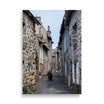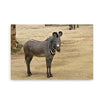Digital Art and Culture: Revolution and Innovation in the Modern World
SEO Meta-Description : Explore the impact of digital culture on contemporary art. Discover how technologies are transforming artistic creation and new forms of visual expression.
Introduction
The digital age has transformed the way we create, share, and consume art. Digital culture, with its technological innovations, has opened new perspectives and redefined the boundaries of artistic expression. This article explores the impact of digital culture on contemporary art, new forms of digital art, and how these developments influence our perception of art and culture.
What is Digital Culture?
Digital culture encompasses the set of cultural practices that emerge with the use of digital technologies. It includes the creation, dissemination, and consumption of works of art, music, literature, and other forms of cultural expression via digital platforms. Digital tools enable increased interactivity, global collaboration, and unprecedented accessibility to works of art.
The Impact of Technology on Art
1. Democratization of Artistic Creation
Digital technologies have democratized artistic creation by making creative tools accessible to more people. Photo editing software, digital drawing apps, and music platforms allow anyone to create and share their art.
2. New Art Forms
Digital culture has given rise to new art forms such as digital art, interactive art, virtual reality (VR) and augmented reality (AR) art. These art forms leverage technologies to deliver immersive and innovative experiences.
3. Collaboration and Global Sharing
Digital platforms facilitate collaboration between artists around the world. Art projects can be co-created by people located thousands of miles apart, enriching artistic diversity and innovation.
4. Transformation of Diffusion Methods
The Internet has transformed the way art is distributed and consumed. Online galleries, social media, and streaming platforms allow artists to reach a global audience without the constraints of physical exhibition spaces.
New Forms of Digital Art
1. Digital Art
Digital art includes any work created or modified by digital means. This includes digital illustrations, retouched photographs, digital paintings, and works generated by algorithms.
2. Interactive Art
Interactive art engages viewers by allowing them to actively participate in the work. Examples of interactive art include interactive installations, artistic video games, and online works that react to users' actions.
3. Virtual and Augmented Reality
Virtual reality (VR) and augmented reality (AR) art create immersive experiences where viewers can explore artistic environments in three dimensions. These technologies help push the boundaries of imagination and artistic exploration.
4. Generative Art
Generative art uses algorithms to create unique works of art. Artists program rules and parameters, and machines generate infinite variations of artwork based on these instructions.
Innovative Artists in Digital Culture
1. Refik Anadol
Refik Anadol is a pioneer of digital art, known for his immersive installations that combine data, algorithms and architectural elements to create spectacular visual experiences.
2. Beeple
Beeple is a digital artist known for his “Everydays” artwork, an ongoing series of daily creations. He recently gained global attention by selling a digital artwork as an NFT for millions of dollars.
3. TeamLab
TeamLab is a Japanese art collective that creates interactive and immersive installations using digital technologies. Their works transform spaces into dreamlike experiences where viewers can interact with visual and sound elements.
4. Sougwen Chung
Sougwen Chung is an artist who fuses traditional art with robotics and artificial intelligence. Her works explore the collaboration between human and machine, creating fascinating hybrid pieces.
Influence of Digital Culture on Society
1. Accessibility and Inclusion
Digital culture makes art more accessible to a diverse audience. Artworks can be viewed online, allowing people from all over the world, regardless of their geographic location, to access artistic experiences.
2. Commitment and Participation
Digital technologies encourage active engagement and audience participation. Interactive works and social platforms allow viewers to become active participants in the artistic process.
3. Education and Awareness
Digital tools are used for arts education and cultural awareness. Online courses, tutorials and virtual exhibitions provide opportunities for learning and discovery.
4. Preservation and Archiving
Digital technologies play a crucial role in the preservation and archiving of works of art. Digital collections help preserve and document works for future generations.
Challenges and Future Prospects
1. Authenticity and Ownership
Digital culture raises questions about the authenticity and ownership of artworks. Digital works can be easily reproduced and shared, making it difficult to manage copyright and protect the integrity of the works.
2. Technological Evolution
The rapid evolution of technologies poses a constant challenge to artists and cultural institutions. The need to adapt to new technologies and stay up to date with innovations is essential to remain relevant in the field of digital art.
3. Experimentation and Innovation
The future of digital art and culture lies in experimentation and innovation. Artists will continue to explore new ideas and push the boundaries of artistic expression through emerging technologies.
Conclusion
Digital art and culture represent a revolution in the world of artistic creation and expression. Digital technologies have democratized artistic creation, opened new perspectives and transformed the way we consume and perceive art. By embracing these innovations, artists and cultural institutions can continue to enrich our cultural experience and push the boundaries of imagination.
FAQs
What is digital culture? Digital culture encompasses cultural practices that emerge with the use of digital technologies, including the creation, dissemination and consumption of works of art via digital platforms.
How does technology influence art? Technology influences art by democratizing artistic creation, introducing new art forms, facilitating global collaboration, and transforming the methods of disseminating works.
What are the new forms of digital art? New forms of digital art include digital art, interactive art, virtual reality (VR) and augmented reality (AR) art, and generative art.
Which artists are known for their work in digital culture? Artists known for their work in digital culture include Refik Anadol, Beeple, TeamLab, and Sougwen Chung.
What are the challenges of digital art? Challenges of digital art include managing the authenticity and ownership of works, adapting to rapid technological changes, and the need for constant experimentation and innovation.
How does digital culture influence society? Digital culture influences society by making art more accessible, encouraging engagement and participation, facilitating arts education, and playing a role in the preservation and archiving of artworks.




































































Leave a comment
All comments are moderated before being published.
This site is protected by hCaptcha and the hCaptcha Privacy Policy and Terms of Service apply.